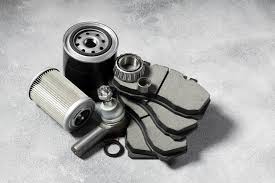Knowing When to Replace Wear Parts on Heavy Equipment: A Guide to Performance, Safety & Savings

Heavy equipment is built to take a beating—but even the toughest machines have a weak point: wear parts. These are the components designed to wear out over time, like liners, screens, crusher jaws, hammers, cutting edges, and seals.
While it’s tempting to run parts to failure to "get your money’s worth," this strategy can backfire—leading to unplanned downtime, equipment damage, and major safety risks.
In this post, we’ll explore when to replace wear parts, what signs to watch for, and how the right timing can actually save you time and money.
What Are Wear Parts?
Wear parts are components that degrade through regular use, especially in harsh environments like mining, quarrying, crushing, or material handling. Common examples include:
-
Crusher wear plates and jaws
-
Screen meshes and tension decks
-
Conveyor belt scrapers and rollers
-
Cutting edges and teeth
-
Hydraulic seals and bushings
These parts face high levels of friction, impact, abrasion, and material build-up—meaning they’re designed to wear. The trick is knowing when that wear becomes a liability.
Signs It’s Time to Replace Wear Parts
Here are key warning signs that a wear part needs replacing:
1. Visible Thinning or Cracking
If you're seeing deep grooves, cracks, or paper-thin edges on components like liners or blades, it's time to act. Pushing further risks full failure.
2. Decreased Performance
If your machine isn’t processing material as fast or effectively, worn parts might be to blame. This is especially true for crusher jaws or screen decks.
3. Increased Vibration or Noise
Unusual noises, shakes, or rattles often mean parts are loose, misaligned, or degraded. This adds wear to surrounding components.
4. Frequent Clogging or Material Build-Up
Worn parts often disrupt material flow, leading to blockages or reduced throughput.
5. Hydraulic Leaks or Pressure Drops
Seals and hoses wear out over time—don’t wait for a catastrophic burst.
Why Waiting Too Long Costs More
Delaying wear part replacement can lead to:
-
Secondary damage to shafts, bearings, or frames
-
Safety risks from equipment failure or unexpected movement
-
Longer downtime due to major repairs or unplanned freight
-
Higher labour costs for emergency response or overtime
In other words: a $200 part can become a $2,000 repair—fast.
Best Practice: Preventive Maintenance & Scheduled Replacement
Smart operations use wear-life tracking and scheduled inspections to stay ahead. Here's how:
-
Keep detailed records of operating hours and part lifespan
-
Use photos and caliper readings to track wear over time
-
Stock critical spares to avoid delays
-
Work with suppliers who can help you predict wear based on material type and machine use
Many aftermarket suppliers even offer custom wear kits and on-site inspections, helping you plan replacements before breakdowns happen.
Don’t Just Replace—Upgrade
When it’s time to replace, it might also be time to upgrade.
Modern non-OEM parts often feature:
-
Enhanced metallurgy for longer life
-
Improved fitment for easier installation
-
Better design for wear distribution or ease of maintenance
You may find that a non-OEM part not only costs less—but performs better in your environment.
Final Word: Don’t Let Wear Wear You Down
Replacing wear parts isn’t just a maintenance task—it’s a strategic move. By understanding wear patterns and working with a supplier who knows your industry, you can reduce downtime, extend machine life, and protect your team.
At the end of the day, proactive maintenance beats reactive repairs every time—and the right parts partner makes all the difference.
